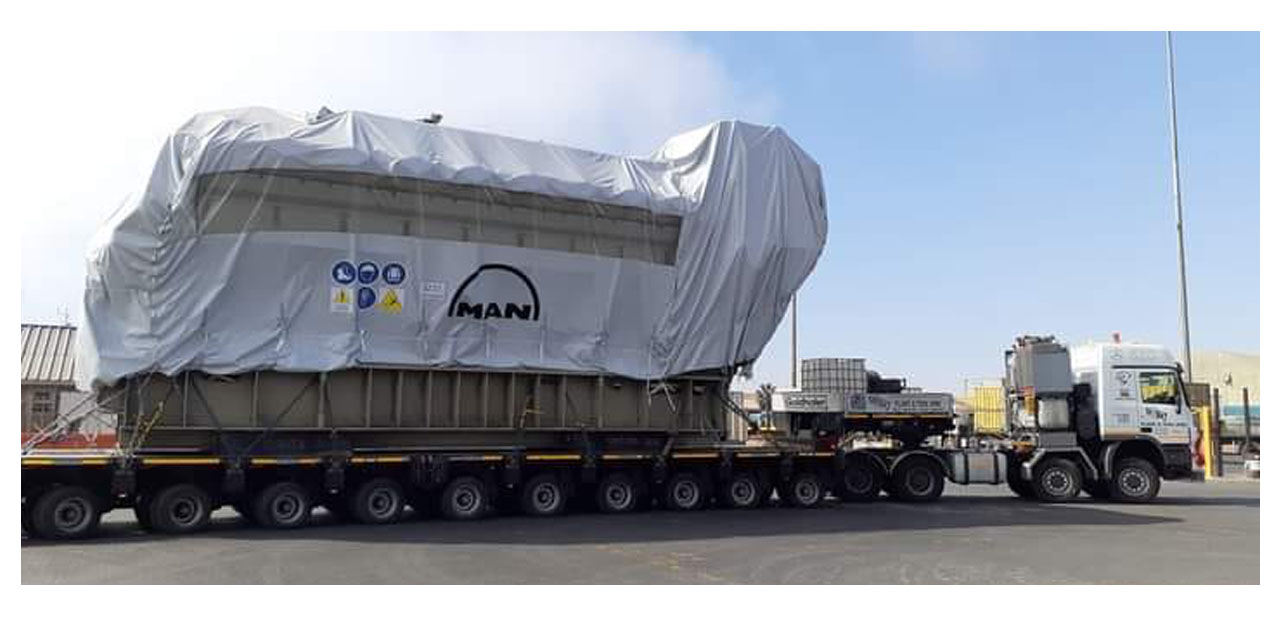Niël Terblanché
Three giant diesel-powered engines that will be used to generate electricity at the Anixas Power Station in Walvis Bay arrived at the port at the start of the past weekend.
The engines along with generators will be used in the new Anixas II development of the power station currently under construction.
According to Simson Haulofu, the Managing Director of NamPower, the three engines and their generator units have a combined generation capacity of 54 Mega Watt. The engines can be powered by either diesel or natural gas and along with the older equipment already installed will generate a total of 75MW of electricity.
Haulofu said in a statement that the purpose of the power station in Walvis Bay is primarily to support the security of supply in the Namibian grid because it is able to provide firm, dispatchable power when needed during times of energy supply shortages and to support larger integration of intermittent renewable energies such as solar and wind.
“In addition to the Anixas I’s 22.5MW capacity, Anixas I and Anixas II combined will give a total capacity of approximately 75MW, which will make Anixas a much bigger power plant, sufficient to meet the demand of the Erongo region in its entirety,” he said.
According to Haulofu, the power plant runs on Very Low Sulphur Fuel Oil (VLSFO).
“It, however, is also able to run on natural gas. Fueling the generation units with natural gas, as the transition fuel of the future and once it becomes more readily available, is the preferred way to go,” he said.
Residents of Walvis Bay stood in awe as specialized heavy-duty trucks of Walvis Bay Plant and Tool Hire transported the machinery through the streets of the port town.
Each of the three giant engines weighs 350 tonnes, and each of the three generators weighs close to 70 tonnes.
The Anixas II project forms part of a group of projects aimed at eventually generating 220MW of electricity.
Haulofu said the Ministry of Mines and Energy in 2018, determined that Anixas I and II along with renewable energy projects such as solar, wind and biomass, must generate a total of 220MW. The renewable projects will eventually produce 170MW.
According to Haulofu, the Anixas II project is expected to be completed by the end of May 2024.




